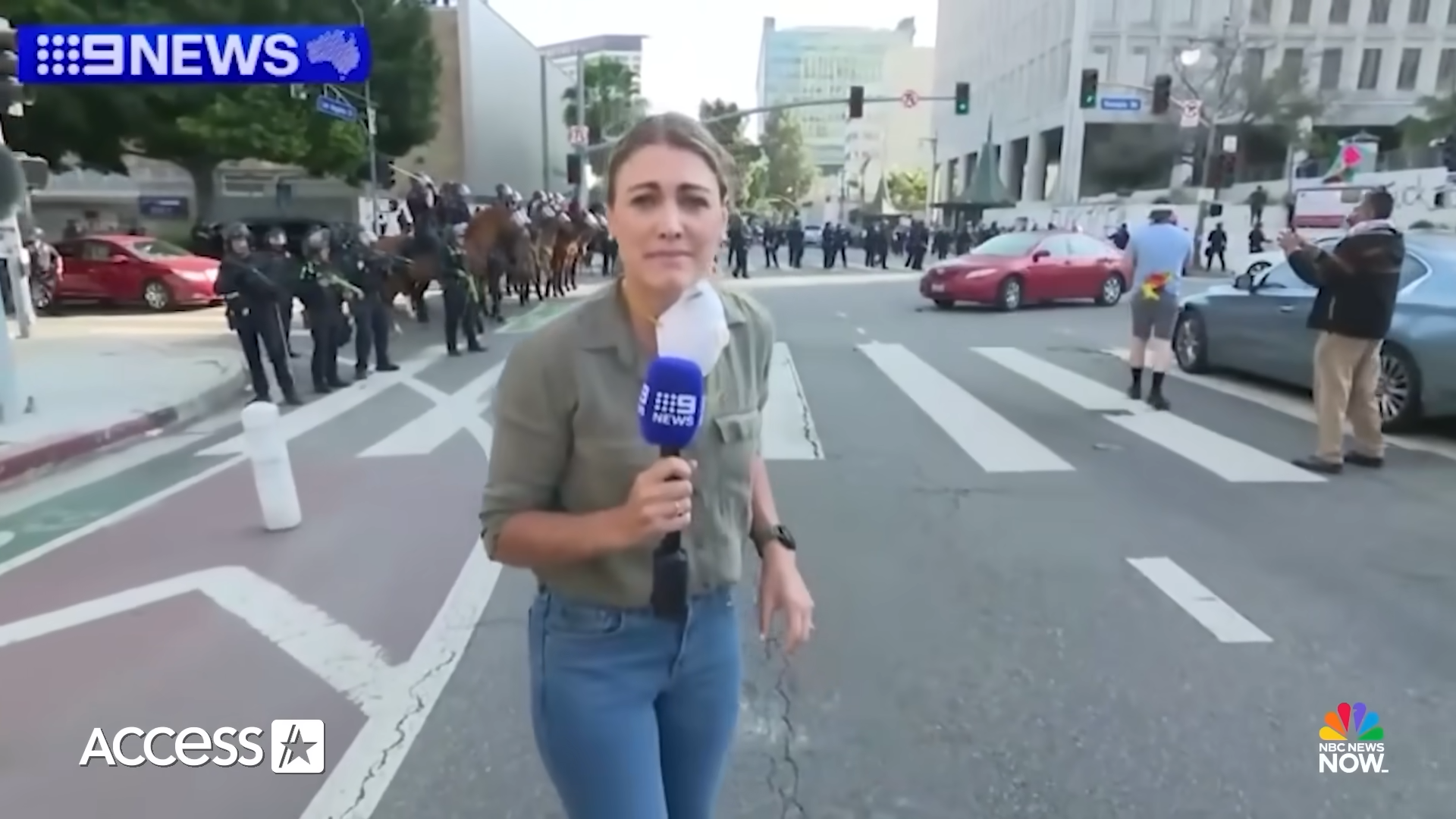It’s one thing to report the news. It’s another thing entirely to become the news, especially when you’re just doing your job. That’s exactly what happened to Australian television reporter Lauren Tomasi, who was struck by a projectile while live on the air during protests in downtown Los Angeles.
Let’s set the scene: Sunday afternoon, downtown L.A., tensions high according to the New York Times. Protesters and police face off in the streets, and cameras are rolling. Tomasi, a reporter for 9News Australia (a CNN affiliate), was standing off to the side of an intersection, narrating the unfolding chaos as heavily armed officers and police on horseback moved in.
“The situation has now rapidly deteriorated, the L.A.P.D. moving in on horseback, firing rubber bullets,” Tomasi said during her broadcast. And then, bam, it happened. A law enforcement officer pointed a weapon in her direction and fired. The projectile hit. Tomasi screamed and limped away, clearly in pain.
Reporter Lauren Tomasi Was Not Serioulsy Injured
Thankfully, she wasn’t seriously injured, but the incident adds fuel to an already blazing conversation: How safe are journalists when covering protests? And why do these so-called “nonlethal” weapons keep hitting people who aren’t even participating?
In this case, it’s still unclear whether the officer was aiming at Tomasi or even which agency the officer worked for. Multiple forces were on the ground that day, including the L.A.P.D., the California Highway Patrol, and the Department of Homeland Security. Not exactly a simple whodunit.
The California Highway Patrol was quick to say it had nothing to do with it. The L.A.P.D., on the other hand, chose the tight-lipped approach, declining to offer “any comment or statement on any specific incident pertaining to the protests.” So much for transparency. Meanwhile, support for Tomasi came all the way from home. Australia’s Department of Foreign Affairs and Trade backed her up, stating that “all journalists should be able to do their work safely.” Preach.
Lauren Tomasi’s Story Is Not an Isolated Case
This incident isn’t a one-off, either. Several journalists were reportedly injured while covering the L.A. protests, though specific details haven’t been released. It all feels a little too familiar. Flashback to 2020, when the George Floyd protests sparked a wave of clashes between demonstrators and police, and once again, journalists were caught in the crossfire. Back then, nonlethal rounds were also widely used, and the injuries were serious enough to prompt questions about whether these so-called “less dangerous” alternatives should even be legal for crowd control.
Rubber bullets and foam rounds may be marketed as safer options than live ammo. However, let’s be real, they still hurt like hell, and they can absolutely cause long-term damage. Just ask anyone who’s taken one to the face, arm, or, like in Tomasi’s case, the leg.
So here we are again, in a city that’s no stranger to protest or media attention. Watching journalists get hit just for doing their jobs. With no clear answers from police and more questions than ever about the use of force. It begs the question: Is the freedom of the press actually safe when covering civil unrest? It shouldn’t be controversial to say that reporters deserve protection, not projectiles.

